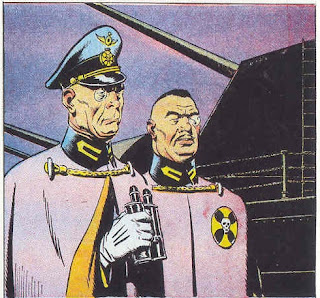On Google Plus, Dan D. asked what my "solar system only" version of Star Wars would be. My initial impulse was to but Star Wars all on one fantastic planet like Mongo or on a planet system with a number of moons like Pandarve in Storm or Mongo of the 1980 film. On further consideration, I thought a more Buck Rogers or post-Raymond Flash Gordon thing would also be cool....
Planet Earth has once again been plunged into a World War. An oppressive Empire has gained control of five continents, and the Americas are under siege. Brave freedom fighter rocketeers striking from hidden bases, have managed to keep the military might of the Empire at bay.
To crush the resistance once and for all, the Empire has constructed a giant battle station within an asteroid. The power of the Death Star will spell certain doom for the Union of Pan-America, and for the other free worlds of the Solar System.
Princess Leia, a refugee of conquered Europe and Resistance agent, is charged with spiriting stolen plans to the Death Star off Earth and to the secret base on Ceres. Unfortunately, her ship is captured by a squadron of Imperial rockets commanded by Darth Vader.
 |
| The Death Star's commander, Grand Moff Tarkin, will interrogate the Princess personally |
 |
| Obiwan saves Luke from the savage Tuskens |
Spurred by the urgency of the message Obi Wan, Luke, the monkey, and the robot go to spaceport Mos Eisley to find a ship to carry them to Earth. They hire a hotshot pilot named Han Solo with a Venusian Wookie co-pilot, Chewbacca.
 |
| "She's fast enough for you, old man." |
 |
| "Bring me Solo!" |
You get the idea!




















